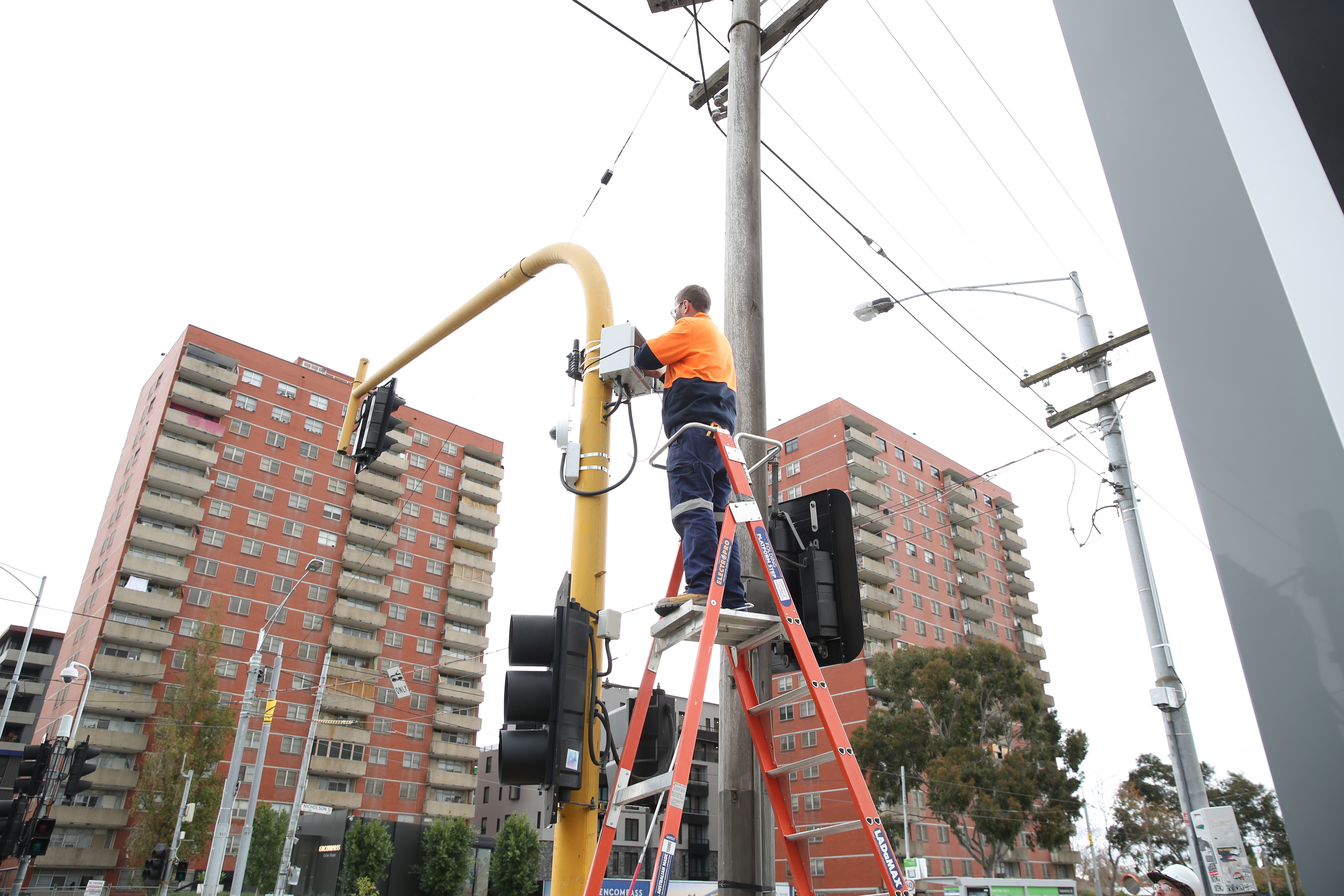
An intersection in inner-city Melbourne has been labelled the most intelligent in the world, with its network of smart sensors working to capture commuter, vehicle and public transport’s movements to avoid dangerous activity, enhance sustainability, improve safety and reduce congestion.
The intersection, at Johnston and Nicholson Streets in Carlton, is part of the Australian Integrated Multimodal EcoSystem (, consisting of more than 200 smart sensors connecting all parts of the transport environment within a six square kilometre area across the suburb.
AIMES is the first transport ecosystem of its kind, where new, emerging and integrated Internet of Things (IoT) technologies can be trialled in a real-world environment.
Led by Melbourne School of Engineering transport systems engineer Majid Sarvi, AIMES’ vision is to deliver safer, cleaner and more sustainable transport solutions for all.
AIMES uses artificial intelligence to profile intersections to identify potentially dangerous activity of vehicles and road users, including vulnerable road users like cyclists and pedestrians. Over time, AIMES is developing a deeper understanding of what safety measures and actions can be taken to prevent future collisions at intersections to keep us safe.
These include measures such as priority traffic light signals for emergency vehicles or real-time dashboard warnings alerting drivers to a cyclist in their blind spot.
Professor Sarvi has issued a challenge to find an intersection more intelligent than the one at Johnston and Nicholson Streets.
“The technology in AIMES captures what trucks, bikes, pedestrians, cars, motorbikes, buses and trams are doing at the same time, and captures those movements in real time – where they are moving, how fast they are going, how many vehicles are queuing, which vehicle is likely to come in to the path of another,” he said.
“We don’t think there’s another intersection in the country – possibly the world – that comes close to knowing as much about how its users respond to the environment. We have smart sensors and IoT technologies working together to provide AIMES with this valuable anonymised data.”
Professor Sarvi issued his global challenge to find a more interconnected intersection ahead of the being held in Melbourne from 20-22 November, where he will be showcasing AIMES.
Media are invited to attend a technical tour of AIMES at 2:30pm on Tuesday 19 November in Carlton, to see firsthand, trials that are currently in operation. These include AI mapping and measurement of movement to mitigate dangerous activity, improved safety and enhanced city mobility. There will also be an opportunity to ride on the University’s autonomous shuttle vehicle. Please contact Stephanie Juleff for further information.
The University of Melbourne is a premier sponsor of World Engineers Convention.
AIMES is University of Melbourne-led with more than 50 industry, technology and government partners including Cisco, Cohda Wireless, Transport and Accident Commission and Department of Transport.







